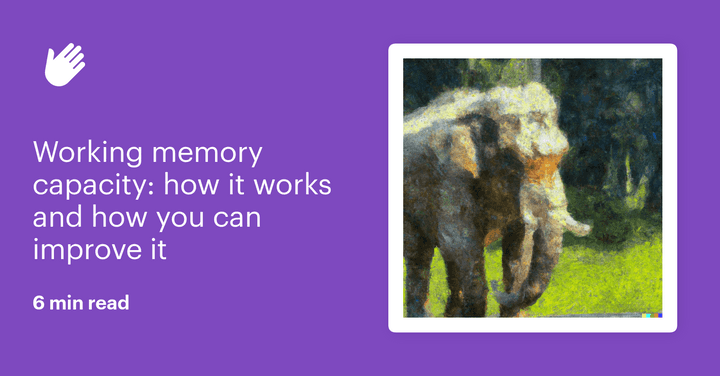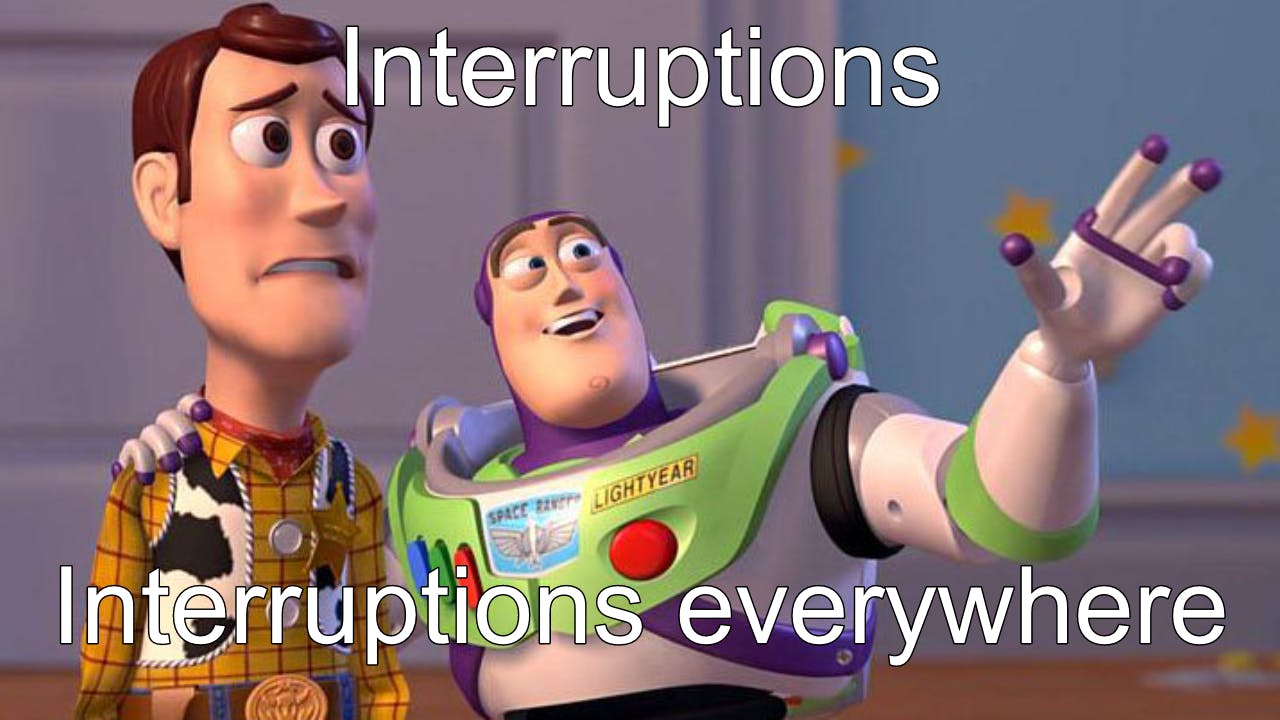Working memory capacity: how it works and how you can improve it

You came here to find out information about something important, but between the delivery driver at the door, two push notifications from Slack, and the catchy hook from the song you’re listening to, you’ve forgotten what it was... Oh, that’s right, working memory!
Your working memory capacity is small, and the more things competing for your attention, the more sluggishly it will perform. Understanding how your working memory works and how you can enhance it is vital for improving your performance at school, at work, and in your day-to-day life.
Understanding working memory capacity
Working memory is a type of memory, specifically meant to hold a small amount of information relevant to accomplishing certain things within a certain, relatively short time frame. While we have almost indefinite storage and recall for long-term memory — generally where the brain likes to hold facts and significant memories — our working memory capacity covers only a few discrete memory items, such as shopping list items, numbers, and tasks.
According to researcher George A. Miller, a young adult’s working memory capacity is around seven elements — the “magical number seven,” he calls it. The study of working memory capacity is nuanced and ongoing, however. The number of things we can recall may vary based on what kind of items they are (digits vs. letters vs. words) and each individual’s unique working memory capacity.
You can test your working memory capacity in various ways, but the most common one used by researchers is called the “complex span task.” During a complex span task, researchers require a subject to first do a memory task, like remembering the order of a set of items, and then a processing task, like solving a math problem. A “simple span,” in contrast, would simply show something and then ask the test-taker to recall it. For example, someone taking a “reading span” would read a sentence and potentially be asked to recall words present in that sentence.
Expanding the limits of your working memory capacity
Now that you’ve got a better idea of how working memory, well, works, how do you go about improving it? Getting better working memory capacity isn’t just about brain training: it’s about clearing space for it to work.
Embrace the calm
Decluttering your mind is vital for increasing working memory capacity. When you’re stressed or anxious, your working memory capacity can easily be overburdened. Here are some tips to reduce the burden:
- Focus on just one thing at a time so your working memory won’t have to hold onto as much information at once. When your brain doesn’t have to context switch as often, it reduces the likelihood of you losing what’s in your working memory.
- Try mindfulness exercises or meditation to keep your mind clear before you perform any tasks that require a lot of your working memory capacity.
- Adopt regular habits at regular times during the day. Your mind will be more organized and less prone to random distractions.
Turn off notifications
You’re doing great with your task list, and then — BAM! — Slack goes off, and you’ve lost your flow. Consider turning off notifications from apps like Slack or WhatsApp during times where your undivided attention is required. You may also want to set your phone to “Do Not Disturb,” as there’s nothing more distracting than getting notifications from Twitter or TikTok while you’re trying to focus.
New items that come in will consistently push other items out of your working memory. Eliminating intrusions and distractions make it easier for your working memory capacity to hold onto info and get things done.

Experiment with new learning strategies
We all learn differently — and you might need to change your strategy a few times to get the best out of your working memory. Look into your learning style and try out suggestions that align with how you learn and retain information best.
For example, some people absorb information better visually than verbally. If lists of words aren’t working for you, don’t be afraid to toss them and bring in mind maps and spider diagrams instead. Other people need to move in order to think at their highest speed; step away from the desk and take a walk when trying to memorize facts.
If you need to learn long chains of digits, develop an encoding strategy by turning chains of digits into “strings” to be memorized in groups of three to five. Try out mnemonics — ways to quickly remember words or phrases — like remembering the order of the planets with the acronym “My Very Excellent Mother Just Served Us Nachos.” (Mercury, Venus, Earth, Mars, Jupiter, Saturn, Uranus, and Neptune).
Your results may vary since not every strategy works for every person. Experiment and see what works and what doesn’t, then hold fast to the methods that make things stick in your working memory.
Get an external hard-drive for your mind
You might think we’re joking, but there’s a tool out there that can help give you an external working memory.
Heyday can help you expand your working memory capacity by keeping track of the information you browse while going on deep dives through Google or Wikipedia.
It saves in-tab information so you can search for that one article you read about that one thing — without manually digging through every page you visited. Heyday resurfaces pages you’ve previously searched at those opportune moments, making it easier for you to avoid the “tip of the tongue” syndrome. With Heyday, you don’t have to keep track of all the tabs you browsed, freeing up your working memory capacity for tackling the tasks at hand.
Your working memory is limited by definition
Your working memory is exactly that: always working and only focused on what’s immediately necessary. As a result, it’s limited by nature, so you have to learn how to work around those limitations. Instead of putting undue strain on your working memory, manage your expectations and find ways to accommodate what your working memory can and can’t do.
After all, we’re only human! When your brain is overloaded, give it a break. Don’t commit it to learning or doing more than it can handle at any given time. When you work with what you’ve got, without overextending yourself, you’ll get better at putting your working memory to work for you more reliably.
Reduce the strain on your overworked working memory
Free up the memory space in your brain so you can focus better by offloading the heavy lifting to us. Try out Heyday, and see how we can help you improve your working memory today.
